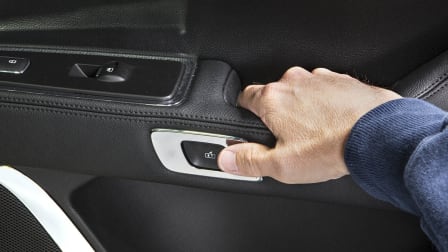School Bus Safety Tips for Back to School
What kids should do before they get on the bus, during a trip, and when they exit

Every school day in this country, more than 20 million children ride the bus to and from public schools. Those classic, yellow buses are among the safest modes of transport—students are about 70 times more likely to get to school safely when taking a bus instead of traveling by car, according to the National Highway Traffic Safety Administration (NHTSA). That’s because school buses are the most regulated vehicles on the road, NHTSA says; they’re designed to be safer than passenger vehicles in preventing crashes and injuries.
In This Article
Tips for Drivers
In order to make sure that you’re not part of the problem, follow this advice:
Learn the school bus laws in your state. Both the NSC and NHTSA remind drivers that it’s illegal in all 50 states to pass a school bus while the school bus stop-arm is extended and the red lights are flashing, which indicates that the bus has stopped and that children are getting on or off.
Yellow flashing lights indicate that a bus is preparing to stop to pick up or drop off children. Drivers should slow down and prepare to stop. Cars must stop a safe distance away and not start again until the red lights stop flashing, the stop sign has been folded back, and the bus begins to continue on its way.
State laws vary on how far you must stop from a bus, so try to come to a complete stop at least 20 feet from the front or rear of the school bus. (The 10-foot area around a school bus is the most dangerous area for children, says the NSC.) Drivers should be mindful that children may still step into the road or be distracted, as the bus accelerates away.

Photo: Getty Images Photo: Getty Images
Be Alert Throughout the Neighborhood
Drive slowly and watch for children walking in the street, especially where there are no sidewalks. Many children also walk or bike to school, so you need to remain alert even if a school bus isn’t in the vicinity, says Jennifer Stockburger, director of operations at Consumer Reports’ Auto Test Center. “Drivers should be especially aware if their trips take them near a school during arrival and dismissal times.” That’s when kids on foot or riding a bicycle will be on sidewalks or crossing streets.
Look before you back out. Be on the lookout for children walking or bicycling when you are backing out of a driveway or leaving a garage. Every year, thousands of children are killed or seriously injured because a driver backing up didn’t see them, according to KidsandCars.org. Walk around your car or out to the sidewalk to check for any children about to cross your path before you get in the car.
Parents with pickup trucks and large SUVs should also be aware of their vehicle’s huge blind zone in front of the grille where children and other pedestrians aren’t detectable to the driver. This has led to a rise in “frontover” injuries—the type where pedestrians, particularly children, can be injured or killed by slow-moving trucks because the driver cannot see directly in front of the vehicle.
Getting On the Bus
• Be at the bus stop at least 5 minutes before the bus is scheduled to arrive.
• Stand at least 6 feet away from the curb when the bus approaches.
• Wait until the bus stops, the door opens, and the driver says it’s okay to step onto the bus.
• Remain visible to the bus driver at all times. If you have to cross the street in front of the bus, walk at least 10 feet ahead of it before you cross. Be sure the bus driver can see you, and you can see the bus driver.
• In order to make sure that you’re in the driver’s line of sight, never walk behind the bus—cross the street in front of the bus so that the driver can see you.
Riding on the Bus
• If seat belts are available on the bus, buckle up.
• Stay in your seat.
• Don’t put your head, arms, or hands out the window.
• Keep the aisle clear of books, bags, and other objects.
• Wait for the bus to stop completely before getting up from your seat.
Exiting the Bus
• If you have to cross the street, first walk at least 10 feet ahead of the bus until you can see the driver.
• Make sure the driver can see you and indicates it’s safe to cross in front of the bus.
• Even after the driver signals, double-check by looking left, right, then left again. Walk across the road and keep an eye out for sudden traffic changes.
• If your vision is blocked, move to an area where you can see other drivers and they can see you.
• Do not cross the centerline of the road until the bus driver signals that it’s safe.
• Stay away from the rear wheels of the bus at all times.
• If you drop something near the bus, alert the bus driver. Never try to pick it up without warning the driver first, because the driver may not be able to see you.




















